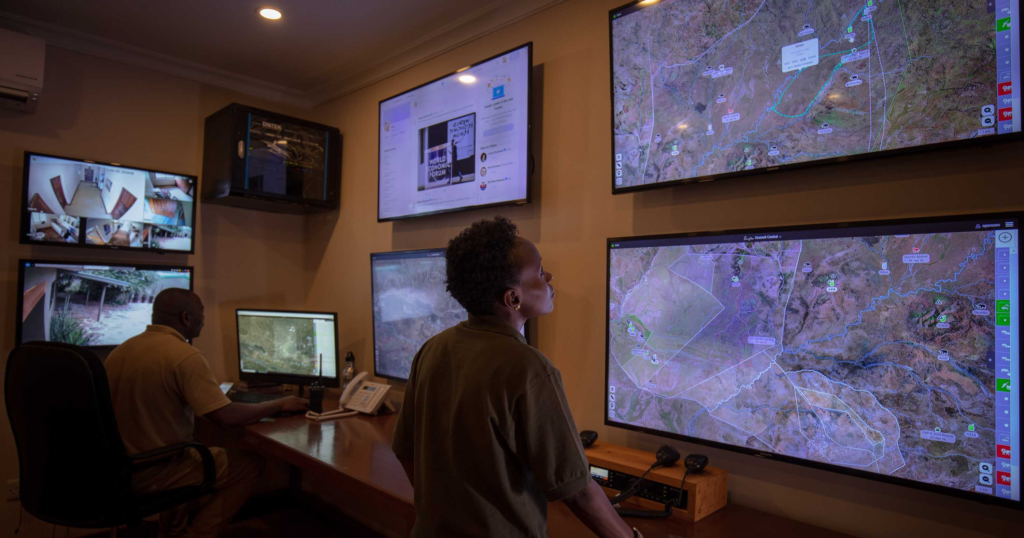The human-elephant conflict has been ongoing for many years in Sri Lanka. Unfortunately, despite the elephant’s cultural significance to the island, this struggle continues to claim lives on both sides even today. Amplified by the current situation, the Sri Lankan elephant population is facing serious threats over its future as a species. In fact, in 2021 alone about 375 elephants were claimed due to the conflict, along with 142 human lives.
Part of the issue with mitigating lies with how the conflict is managed. Areas frequented by elephants such as Yala, Wilpattu, Gal Oya, and Maduru Oya, are demarcated as DWC-administrated Wildlife Protected Areas (WLPAs). But as a Groundviews article points out, many elephants have home ranges that fall well beyond these marked WLPAs. Thereby, confining elephants to these areas seems futile in the long run. While a range of possible measures includes better-enforced policies, more conservation-focused legislature, enhanced protection for vulnerable communities, and others, technology has the potential to play a pivotal role in the current landscape. So where does it stand?
Collared greys
One of the main ways of helping conservation efforts is to improve the available data. This can be effectively done by gathering data via GPS-enabled collars. Collars such as the ones made by local engineering firm E-Gravity enable researchers to effectively track the gentle giants all over the country. This is vital as accurate tracking helps establish important information like elephant corridors. In turn, these elephant corridors allow better-planned electric fencing around vulnerable communities. There are also other factors such as helping determine if an elephant is alive or has succumbed to an injury.
Of course, for this to work long battery life is equally important. Solutions like those on offer by E-Gravity come with a separate backup battery solution that can retain data for up to 12 hours following a power/internet outage. Additionally, the University of Moratuwa and the Sri Lanka Wildlife Conservation Society have also developed a similar low-cost solution—eleID.
Though a number of countries already utilize this solution, countries like Kenya have taken things a bit further. Dubbed “Domain Awareness System”, the African region has integrated the collars’ data with camera traps, weather, and other records to help build a clearer picture of the elephants’ activities.
Taking it to the skies
Getting back to the point about electric fences, even though it’s one of the current methods of protecting communities, these tend to fail. Most times elephants are able to break these fences with stones and logs. But support has been lacking on this front, despite reportedly spending LKR 86 million annually over 4,211km of fencing, It becomes more problematic when there aren’t enough personnel to overlook thousands of kilometers. One possible alternative to overcoming this is to deploy drones.
Aerial surveillance for elephants via drones provides real-time details on elephant movement, detect environmental irregularities, and poaching behavior to name a few. The biggest advantage of using drones is the operational feasibility as they allow for wider coverage and gathers more data in an otherwise resource-limited setup in Sri Lanka. India is already following this approach, owing to the continuing deaths of wild elephants in the country.
Though it should be pointed out that the technology is merely part of the solution. Successful deployment of tech like drones to work requires support from every stakeholder. This includes government investment in resources and training, community support, cooperation with relevant government entities, along with active engagement with academia, among others. Additionally, with the prevalence of other existing ecosystems, utilizing drones need to be well planned out considering drone activity has already caused problems in Mannar.
Earthquake monitoring tech…for elephants?
Contrary to popular belief, elephants don’t always trumpet loudly when conversing. In fact, humans can’t hear much of the low-frequency, long-duration sounds an elephant makes. One study has discovered that geophones—tech used to study seismic signals, would help understand elephant conversations better. Thanks to some computer algorithm assistance, the researchers found that the recording devices can identify different behavioral patterns, even at long distances. This means that researchers and conservationists could potentially keep track of elephant behavior from afar.
The Elephant Listening Project, a conservation effort from Cornell University, opts for Passive Acoustic Monitoring (PAM) for its elephant research in Central Africa. This combines continuous recording audio that gets processed/analyzed with machine learning and artificial intelligence. The result is vital elephant movement and other behavioral data that would have been difficult on a large scale. The project’s initial stages took about three months for the process due to the large file sizes. However, a startup called Conservation Metrics’ AI managed to chop the processing time from three months to 22 days, with hopes of hitting one day.
To be fair, Sri Lanka is nowhere near the coverage requirements of massive regions like Africa or even India. But the island’s relatively smaller landmass should serve as an advantage in deploying such a solution, especially considering the country’s technical capabilities.
Find my elephant
Management software has fast become a critical must-have in nearly every industry today and that includes wildlife conservation as well. One such impactful tool is the EarthRanger protected-area management software, which collects and shares information on a single platform. This means it helps scientists and other stakeholders to do everything from understanding ecological changes to combatting human-wildlife conflicts.

EarthRanger’s input sources include rangers, vehicles, field-based events, wildlife-tracking devices, and a host of other data points. With a focus on security, ecological management, and human-wildlife conflicts, the solution is currently in use by 170 different organizations in 40 countries across five continents.
Although only a screen and an internet connection are required to access EarthRanger, that’s not to say the software is without its challenges. For instance, it requires infrastructure such as trackers and sensors to collect the data. Further, denser areas may pose their own challenges too, particularly with the need for constant reliable internet.
Sri Lanka may be a long way off from employing a similar approach. But tools like management software like EarthRanger showcases the potential of technology for wildlife conservation, particularly when it’s done right.
The human element needs to step up
As stated before, technology can only go so far. Technology can indeed push wildlife conservation efforts further than previously thought possible. But without viable human intervention, it’s only half of the cake. Unfortunately, Sri Lanka has a lot of ground to cover on this front. For starters, Sri Lanka’s poor waste management has turned garbage dumps into literal death traps for wildlife like elephants. It’s yet another problem rooted in short-sighted political motivations.

Then there are other decade-old issues like the use of jaw bombs, aka ‘hakka patas‘ as a means of hunting. Typically, these jaw bombs are used for hunting wildlife like wild boar and these would often kill these types of animals instantly. However, the elephant receives a far crueler fate as the jaw bomb would fatally wound the creature and drags out its death instead. To make matters worse, more elephants have been falling victim to jaw bombs over recent years.
But perhaps a more critical role should be played at the policymaker level. The existing infrastructure alone, particularly the 4,211km+ electric fencing is poorly maintained as the present situation has shown. Even now, despite the issues and pleas from environmental scientists, the Wildlife Conservation Department has reportedly planned to increase the length of its linear electric fences by another 1,000km. Perhaps more serious consideration should be given to scientists, and better laws and policy enactments are in order.
Ironically, introducing tech solutions at a national level could potentially pose its own problems considering Sri Lanka’s history around them. Either way here’s hoping for a better future for the Sri Lankan elephant, the country’s prime symbolism for its religious and cultural identity, sadly amounted to a tragic treatment.







GIPHY App Key not set. Please check settings